Subaru WRX review and buyer's guide
The performance car icon now has a Sportwagon. Let’s look at the fast family-friendly performance sedan and consider if you need the big boot option. Here’s what you need to know…
The new Subaru WRX offers breathtaking performance and the sensibility of a five-seat family car, in a relatively affordable package.
But is it just another spawn of the brawling street fighter that once got a litany of revhead 22-year-olds going home in the back of a divvy van? Or is the WRX the father of its former self? It’s both, actually.
Happily, a WRX today is not the same ball-tearing psychopath which used to outrun coppers in their V8-powered Commodores. It has an extensive array of safety aids to keep you out of jail and with an intact licence. We’ll get to that.
There’s even bigger WRX news because the Levorg which died off a few years ago, is now the WRX Sportwagon (as it should always have been named).
Some people who lamented the demise of the Holden Commodore Sportwagon need cry no more, because this is a proper wagon. It’s not some deformed hatchback like the Golf, and not a space-saver burdened Mazda 6 which probably doesn’t have much shelf life remaining. You can tell Subaru intends to keep making a wagon.
The main contention with the new WRX sedan and Sportwagon is whether it can play both dad’s mid-life crisis sports car and do all the practical stuff required of a five-seater, with boot.
You can download the new Subaru WRX brochure here >> if you’re having trouble sleeping.
Let’s start with the Sportwagon.
There are three model grades, the base model ‘WRX AWD’, the ‘RS’ and the ‘tS’ in either the sedan or wagon body configuration, based on the Subaru Global Platform. Sedan costs range from $50,000 (base manual), to $62,800 for ‘tS’ auto; Sportwagon ranges from $55,600 (base auto-only) to $64,000 for ‘tS’ auto-only. Prices may vary depending on dealer pricing.
Choosing the wagon over the sedan will cost you about $5000 more and adds 28 more kilograms, but obviously you substantially increase your potential stowage capacity from 414 litres of volume to 492 with the rear seats up - that’s an 18 percent increase. You get 909 litres with them down, or according to Subaru, 1430 litres up to the roof.
Compared with its direct rivals, the Mazda 6 (which is potentially not long for this world), the Volkswagen Golf (which only has two model grades - the overpriced R for boy-racers, or the poverty pack 110TSI Lifeline) and the Skoda Octavia (a stripped out Golf with questionable reliability, quality and brand longevity), the WRX absolutely feels like the most dependable option. We’ll discuss the rivals in a moment.
The important numbers on Sportwagon are more crucially compared with its bigger sister, the equally very fast Outback XT >>.
The plain-labelled WRX, from entry-level ‘WRX AWD Sportwagon’ to ‘tS Sportwagon’ weighs 1607kg dry or, when you include the 63-litre fuel tank, 1654kg to 1660kg respectively. This is when you multiply 63 litres of fuel by its weight, which is about 0.75kg per litre. It’s about 50kg shy of a top-spec Outback Touring, which does have a much bigger boot, roof racks and the same 63-litre fuel tank as well as 213mm of ground clearance, versus 140mm (that’s a 7.3cm difference).
But it’s not going to be a potential saving, because Outback and new WRX Sportwagon are about the same price. Outback is $46,700 - $55,000, Sportwagon is $55,600 to $64,000
So why would you choose the Sportwagon over an Outback which offers more; more practicality, better towing potential, an overall greater expedition vehicle? WRX is still in the wheelhouse of a comfortable family tool, but it gets performance lacking in all other Subaru models.
Well, WRX Sportwagon is not only going to be a nicer drive owing to its lower mass-centre (learn more here >>) but being 50kg lighter and offering substantially more power at 202kW - it returns a power-to-weight ratio of 125kW per tonne. That destroys the Outback’s 84.9 potential in even its lightest form. Two very different kinds of transport.
You do not buy the WRX Sportwagon to simply and only mosey along from home to the office - you buy one to punt en route to wherever your family is forcing you to be on your weekends and holidays. And ladies, that includes you. This is an inclusive show, and I know there are many Tiffanies out there who enjoy putting their foot down, much to the curious attraction of their male counterparts.
That 2.4-litre, 95 RON premium-petrol Boxer engine, with direct injection, turbocharger and intercooler, is bigger than the Levorg’s 2.0-litre unit which made 197kW at 5600 revs, to 202 at the same RPM.
And best of all, for all you concerned that WRX might now be some belching filth-machine with all this additional power and weight, the combined cycle emissions are actually reduced to 192g/km, from 201g, and fuel consumption is a marginally better 8.5L/100km from 8.7.
So not only does WRX Sportwagon go better and harder than the old Levorg, it’s now an even sharper value proposition compared with other hot car-based wagons you might be considering.
Let’s use the hottest, highest-spec models for comparison, because, that’s why you’re here and not considering an overweight, impractical SUV.
Ranked on price, the numbers you need to make an informed wagon purchase are:
Looking at these figures alone, you might be asking, therefore, the following questions (or at least you should be):
VW Golf R ($69K): 235kW @ 6600rpm, 1620kg (kerb), 148.5kW/t, wheelbase: 4800mm, boot volume (seats up/down): 611/1642 litres, fuel: 98 RON (50L), AWD.
Does the Golf R offer $9,000 better performance?
No. Unless you’re taking it to a track, in which case, you’ll void your warranty.
Golf R will outpace a WRX Sportwagon (or even in sedan forms), but call it 70 grand by the time you’ve paid for insurance - that’s an extreme case of depreciation over the next five years.
Skoda Octavia RS ($57.5K): 180kW @ 6500rpm, 1542kg (kerb), 119.6kW/t, wheelbase: 2681mm, boot volume (seats up/down): 640/1700 litres, fuel: 95 RON (50L), FWD.
Is the Skoda really a better value proposition?
Not really. It offers marginally better boot volume, but is 43mm shorter in overall length and only 10mm (1cm) longer in the wheelbase (so interior legroom is gonna be the same), the turning circle is virtually the same.
While the boot space is a 148-litre difference, that’ll be because the WRX carries an almost-full-size spare under-floor (205 versus 245). The Skoda gives you all the safety and security of a front-drive only running on a skinny, temporary space-saver keeping you on the road in the wet, on the freeway, at night, while your kids and dearly beloved are asleep as you navigate trucks, slopes and blind crests, while tired after the long weekend. WRX is more car for similar coin.
Mazda 6 Atenza ($52K): 170kW @ 5000rpm, 1629kg (kerb), 107.9kW/t, wheelbase: 2681mm, boot volume (seats up/down): 506/1648 litres, 91 RON (62L), FWD.
Does the Mazda 6 offer greater luxury appointments?
No. WRX has all the same appointments but only needs servicing every 15,000km (or 12 mths) instead of 10,000 (or 12 mths) for the Mazda.
But the Mazda 6 will be a more comfortable long-distance cruiser owing to the smooth low-end power available from the SkyActiv two-litre at 2000 revs (where you typically drive) instead of the Subaru’s 5200 (kinda revving its knickers off).
Depends what you like, really. You should be test driving both and seeing how they compare. We also don’t know for certain if the Mazda 6 will be around much longer, given everybody is, seemingly reverting to SUVs. This means spare parts could be limited.
Subaru WRX tS Sportwagon ($60,000 before ORC): 202kW @ 5600rpm, 1660kg (kerb), 125.2kW/t, wheelbase: 2670mm, boot volume (seats up/down): 492/1430 litres, fuel: 95 RON (63L), AWD.
Do any of the others offer all-wheel drive for less than $70K?
Nein.
The Volkswagen is expensive. And the additional performance you do get isn’t really justified unless you have an unlimited bank account and intend to regularly void your warranty on a racetrack. That’s if you even make it there, thanks to the addition of a ‘feature’ called “Drift Mode”, which as we learned from the Ford Focus RS many years ago, means you could end up dying in a fireball because your talent ran out at the nearest off-camber country road corner en route.
Kinda defeats the purpose of having all-wheel drive, doesn’t it?
How long before “Drift Mode” has an epic computer-based or mechanical technical problem whereby you either attract the attention of local authorities or are forced to confess to Volkswagen Australia you were using the vehicle in contravention of your consumer law requirements to not abuse the vehicle by driving on a track (which is the only place such driving behaviour is acceptable). At this point, of course, your warranty goes bye-bye and Volkswagen leaves you with a Golf R garden ornament to fix at your own cost.
Loading up your Sportwagon means ample room for stocking the bar and making sure the bride gets to the reception safely. Dad points.
SHOULD YOU BUY AN SUV OR WAGON?
Chances are you’re also considering an SUV like the Mazda CX-5, Subaru Forester, Hyundai Tucson, Kia Sportage or even a Mitsubishi Outlander. They’re popular, but are they better?
Certainly the diesel engine offered by Tucson and Sportage is brilliantly efficient and powerful, especially at normal driving revs, but you do need to make sure you drive somewhat regularly on a freeway to keep the DPF system at its healthiest (not that it has had any in-service issues; it’s very reliable). Although WRX does demand premium 95, where the Hyundai/Kia need diesel and line-ball pricing makes it a draw in that respect, you obviously don’t have this DPF upkeep compromise to make with the WRX.
The 2.5 turbo-petrol SkyActiv engine in Mazda CX-5 is a firecracker. And the interior is arguably better than a BMW, so there’s that to consider. However, the Mazda’s AWD system is on-demand, which means it waits for wheel-slip before directing torque to the rear; Subaru’s symmetrical AWD is mechanical and constantly splitting tractive effort to all four.
CX-5 offers 442 litres of boot volume. Sportwagon: 492L.
Forester is very practical with its big wide boot, best ground clearance of any vehicle mentioned in this report, reasonable towing and a snarling exhaust/engine note - but it’s got nothing on the WRX for outright performance. Forester, like Outback, is a bit boring actually. Not until they get this new 2.4T into it, like Subaru Australia has waited two years to deliver on Outback. It is coming…
The Sportwagon only comes with Subaru’s ‘Sport Lineartronic’ CVT automatic transmission - no manual, that’s for sedan only.
It’s important to understand that the wagon is part of a slowly declining segment. Don’t be surprised if the Mazda 6 Wagon is killed off after this generation of Mazda 6 is done with, possibly even before.
The market has chosen to go with SUVs, despite their overall weight increase, their stowage deficits and compromise in the balance between dynamic handling and familial utility. But you also need to know SUVs are not as practical as they purport to be. Often SUVs have worse boot volume than sedans and wagons, so be sure to compare and measure. Here’s how the car industry measures boot volume >>
Adding millimetres to the ride height means carmakers try to give SUVs a wide lower section at the rear to accommodate boot space, and they narrow the roof profile in order to keep the centre of gravity to a minimum. You can learn more about this in my extended interview with vehicle dynamics, handling & tuning legend Graeme Gambold >>
Essentially, it’s the reason sedans and wagons will always handle and drive better than an SUV equivalent. But consumers have ultimately chosen, en masse, to buy the so-called ‘Sports Utility Vehicle’. So your success at re-sale time with a wagon is potentially not going to be as dead-easy as selling an SUV, in my view.
Having said that, be aware that Subaru is a desirable brand with pedigree in this area, so that should counter some of that lost market enthusiasm for the wagon. The other aspect here is that WRX Sportwagon offers two kinds of desirability, performance and practicality. It’s the same reason Holden Commodore Sportwagon was so popular in its day.
Ultimately, the decision is up to you, so think carefully about how you’re going to use a vehicle such as this 90 per cent of the time, while benefitting from its credentials as a practical, multi-role fighter jet for the road.
My AutoExpert AFFORDABLE ROADSIDE ASSISTANCE PACKAGE
If you’re sick of paying through the neck for roadside assistance I’ve teamed up with 24/7 to offer AutoExpert readers nationwide roadside assistance from just $69 annually, plus there’s NO JOINING FEE
Full details here >>
AutoExpert DISCOUNT OLIGHT TORCHES
These flashlights are awesome. I carry the Olight Warrior Mini 2 every day - it’s tiny, robust, and super useful in the field or in the workshop. Olight is a terrific supporter of AutoExpert.
Use the code AEJC to get a 12% discount >>
THE JOY OF WRX: The reason you’re here
Let’s talk about outright performance, because that’s the overarching purpose for buying a WRX. In which case, you’re probably considering the sedan - and the Hyundai i30 N hatch or possibly the Fastback N, too.
You’ll want to know that all-wheel drive system is just begging for you to push it harder, you wanna feel the surge of turbocharged air feeding back into the engine and propelling you forward, turning that tailgating bogan ute into a 1:43 scale model in your rearview mirror.
Yeah, it does all of that, and quite smoothly, you’ll be glad to know.
AutoExpert WRX images: Haberdash Photography >>
The whole car has that feel of every nut and bolt being torqued-up perfectly. It feels tight, solid, but not overly dense.
But let’s get something straight here. Even the bad boy WRX has to comply with the modern world’s safety mandates and the prevailing winds of community expectation. It’s not good ploughing your WRX into someone’s living room window, is it?
The way this thing handles in the modern road network, in traffic, in the rain, at a moment’s notice, is astounding. We’re talking agility, feedback through the steering wheel, confidence that the grip you require for virtually any manoeuvring is possible and safe to execute.
Think of the intermodal precision of a Bell-Boeing V22 Osprey mixed with the horizontal straight-line performance of an FA-18 Hornet. You can get a WRX in and out of a chaotic multilevel carpark, dropping the kids and dearly-beloved, to make a slick exit down the ramp and out the boom gate without doing the SUV-driver’s peering out over the long dumb bonnet, as you graze alloys into concrete kerbs.
You hit the freeway on-ramp and light the fires - boof! - you’re immediately in another postcode. “...To the danger zone”, if you will.
When it comes to choosing the right version, you do get two opportunities for a manual transmission in the base ‘WRX’ and the ‘RS’, with the total weight increasing only 37kg between the two, from 1479kg to 1516kg (tare). But interestingly, the power output stays the same across the range at 202kW up at 5600 revs. Therefore, the power-to-weight ratio decreases as you add more features, and this goes for the CVT auto as well, obviously.
Between base auto and ‘tS’ auto, you go from 130.5kW/t to 127.4 - you lose 3kW of useful motive power just to move the additional 37kg of mass.
Opting for the lower-spec WRX means, of course, you don’t get the goodies like the 10-speaker Harman Kardon stereo (with doof-doof), heated electric seats, power sunroof, or the electronically controlled dampers which are the highlight of the ‘tS’ grade. You can customise how the car behaves, from throttle response and steering resistance (to your inputs, as in, the electric servos require more work from you), to suspension severity and the front-to-rear bias of the all-wheel-drive system.
The system restricts how much torque the centre differential sends to the front, thereby sending more to the back. In normal driving mode, the torque is split 45:55 (front:rear), whereas the ‘Sport’ mode offers a much greater rear bias:
The level of adjusted [torque] split depends on a number of factors, based on data received from several vehicle sensors.
- Subaru Australia
So the computer reads a bunch of information coming in and determines how much torque it can send to the stern.
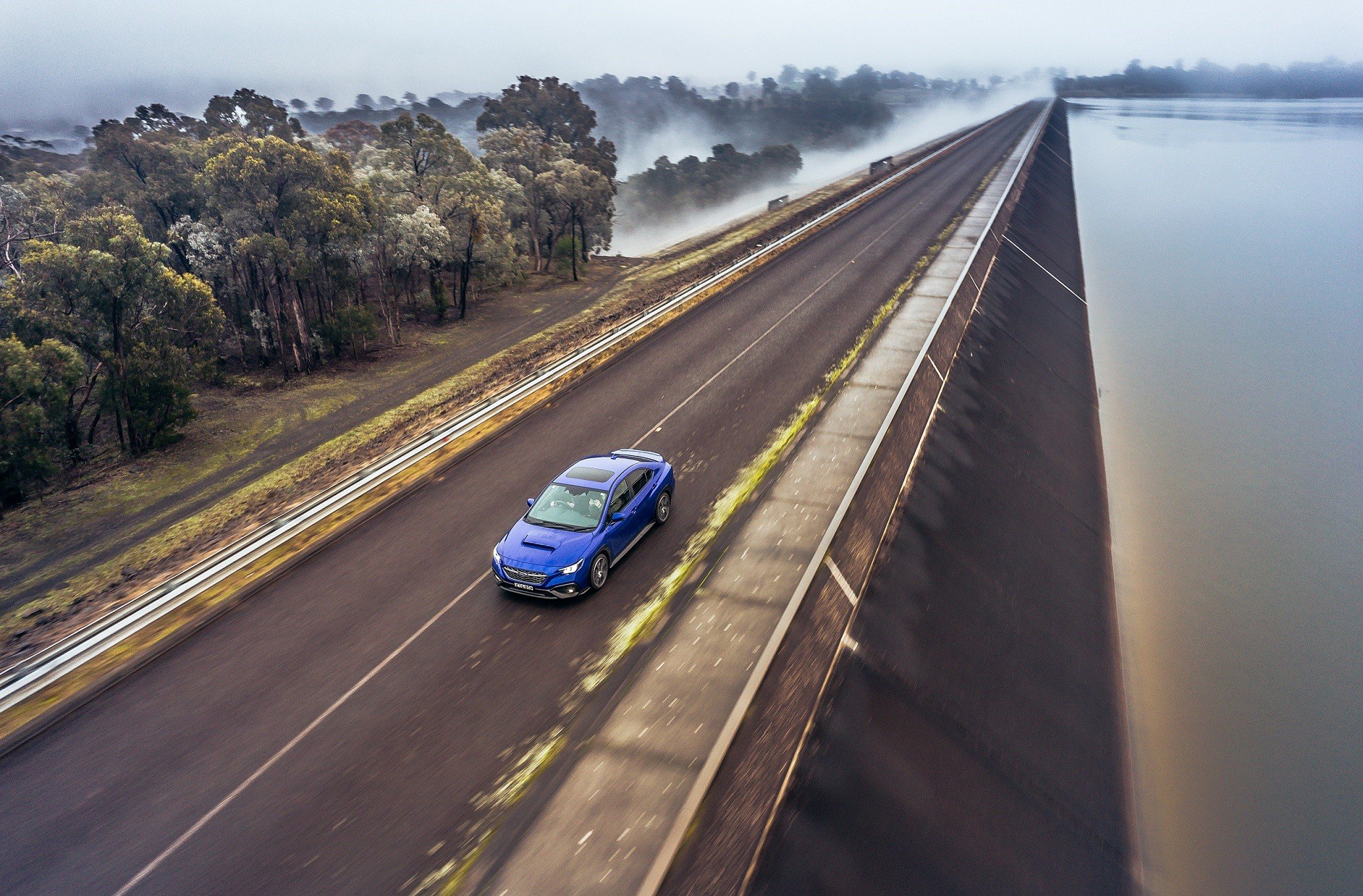
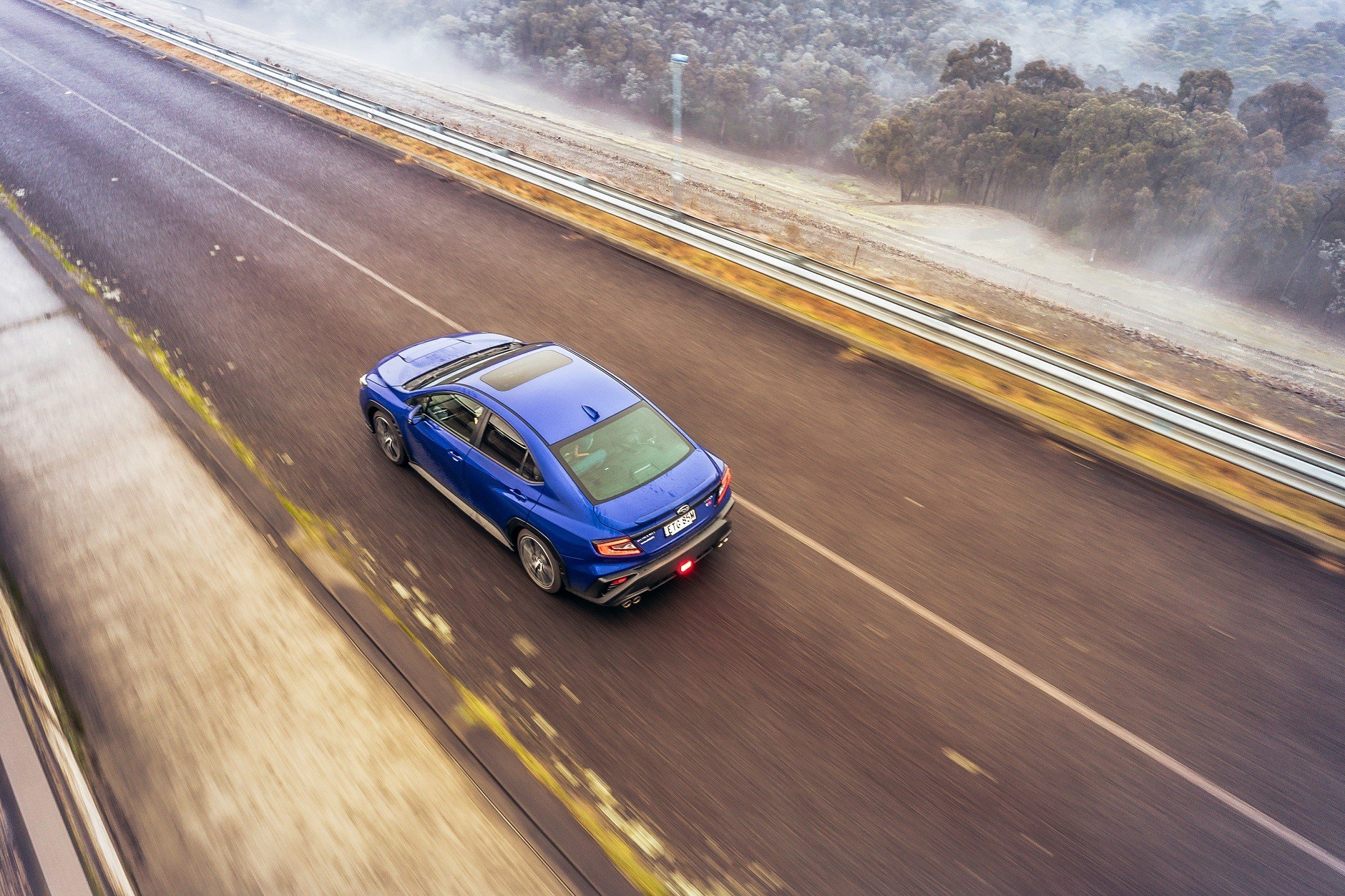
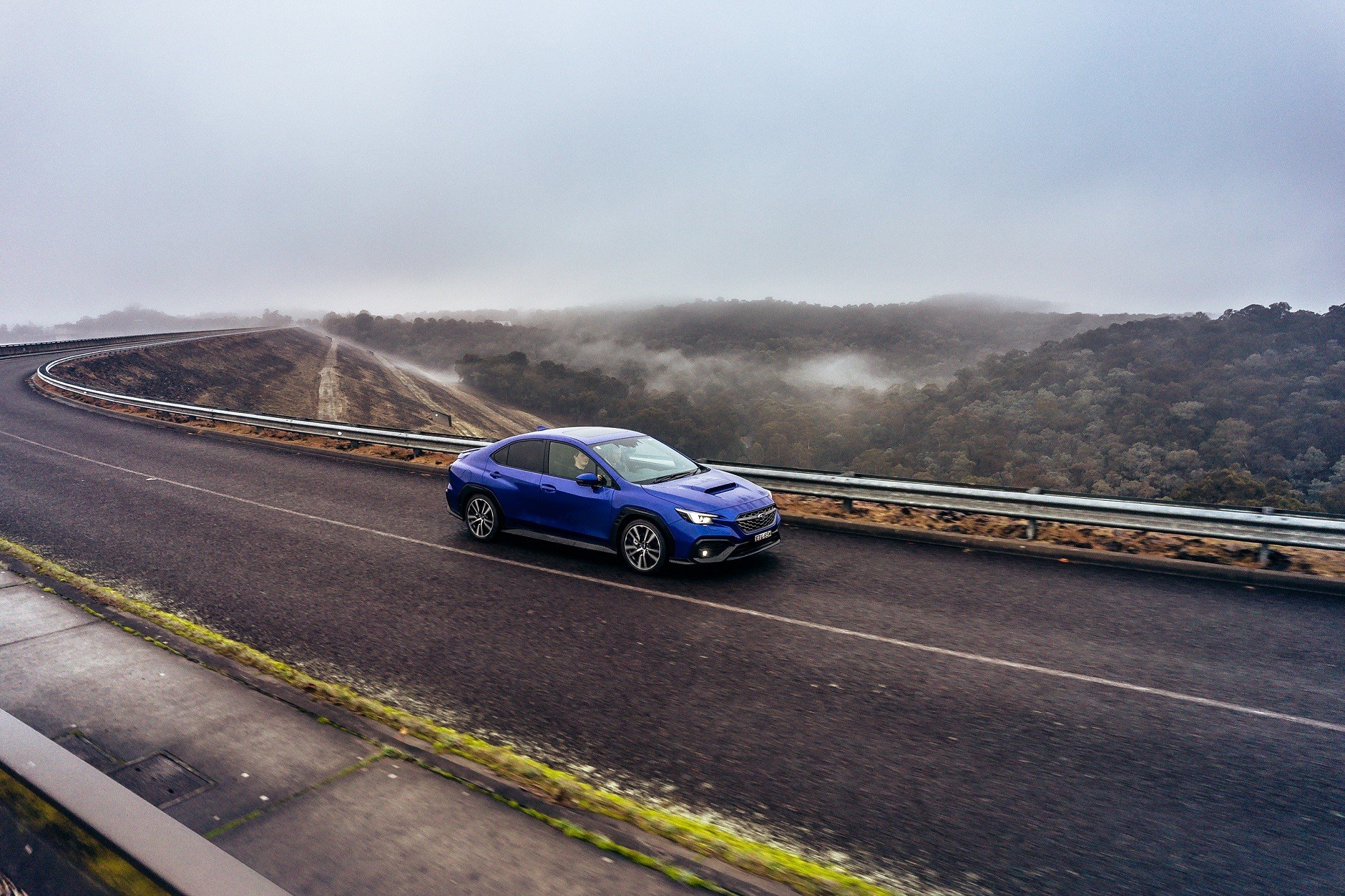
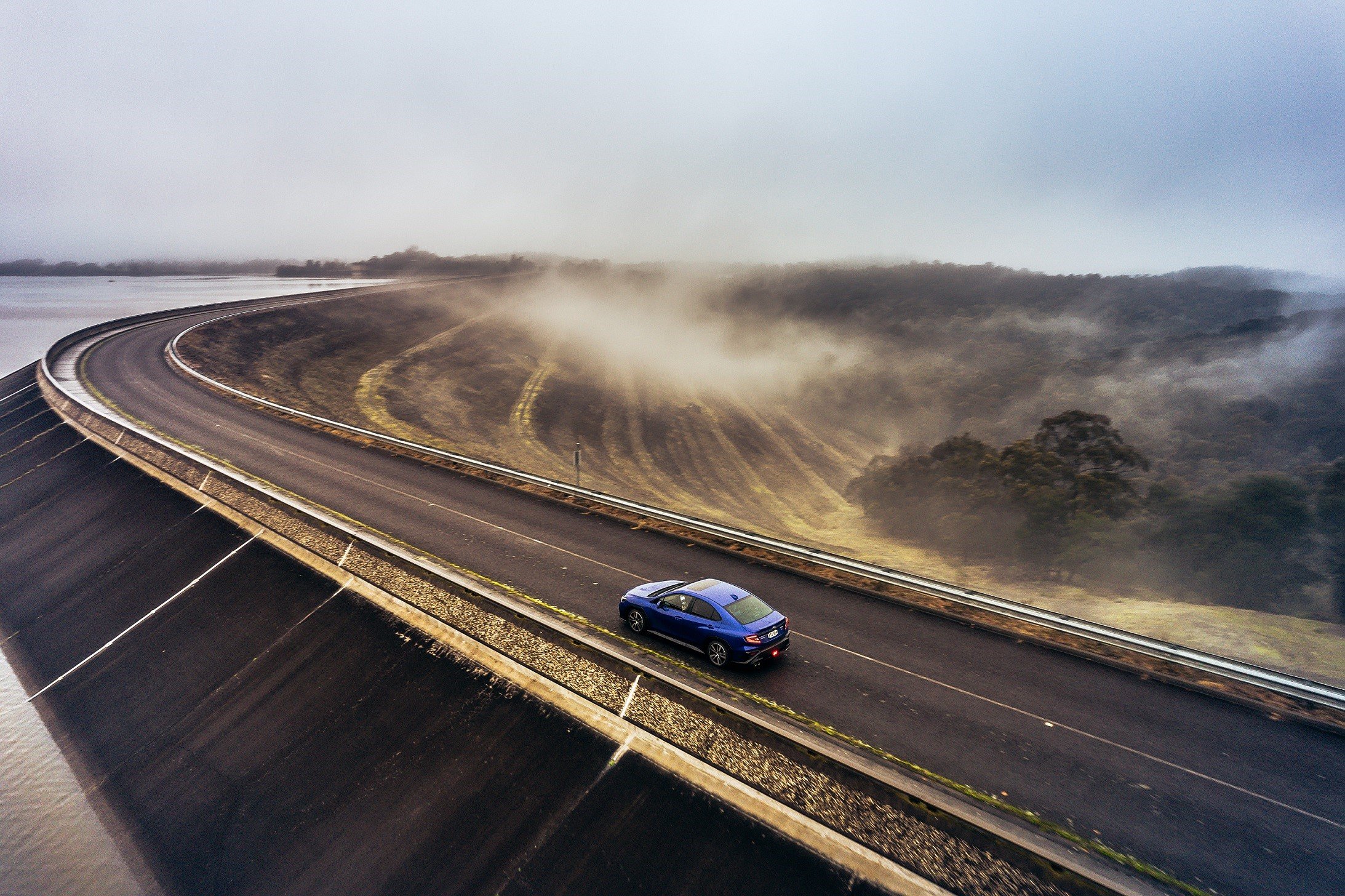
So exactly how rear-drive can your WRX be, then?
The maximum degree of split is information not currently available.
- Subaru Australia
So there it is. Or isn’t in this case. Subaru probably doesn’t want others copying its AWD performance attributes so openly, but you can guarantee they’ve thought carefully about how to manage it.
Ultimately, when it comes to choosing the right WRX, you need to decide what you want in life.
The power-to-weight ratio is better in the manual versions, thanks to that lighter transmission, but it’s likely going to be a slower gear change than in the CVT. The CVT, it needs acknowledgement, behaves like a proper DCT or dare I say, even has moments downshifting when it arrests speed like a sequential.
So, choose how you want to drive your Subie.
Features on all WRX grades are numerous and not restricted to the higher echelons.
This includes the big 11-inch touchscreen, although you’ll want to get very familiar with it in order to minimise eyes-off-road distractions when changing things. Temperature control remains in button form, but basic driving set-up like turning off auto stop-start and deactivating lane-keeping require you to go into sub-menus off the main screen. It will take time to make these things a start-up procedural habit.
Alloy wheels change with model grades, but remain 18-inch jobs, which is an interesting observation given the carmaker obsession with putting bigger, heavier wheels on everything, ultimately increasing unsprung mass. But not on WRX. They’ve actively tried to reduce it, by reducing brake rotor thickness from 30mm to 28, for example.
Tyres on sedan are 245/40R18 and on Sportwagon they’re 225/45R18 - so a slightly narrower and fractionally taller profile tyre on the wagon, but you’re unlikely to notice the difference.
The bonnet scoop is real, as you’d expect on a WRX. It uses a paper air filter for optimal airflow characteristic, reducing air pressure loss by 20 per cent.
The exhaust, which is dual-exit on Sportwagon and quad-exit on sedan, offers a nice combination of civilised but characteristic burble.
It goes without saying that WRX is not an SUV with purposeful ride-height designed to clear grass and sticks with its underbelly. But for demonstrative purposes only in these images, it is helpful to know that you can get further with a greater sense of confidence if you visit rural areas or are faced with unknown, unsealed roads that your sedan or Sportwagon are better equipped for these situations - especially in the wet - than the Mazda, Volkswagen or Skoda competition.
And unlike an uncomfortable (by comparison) ute or hardcore 4WD which are much more agricultural on sealed roads, a Sportwagon or Rexy sedan are going to be quite comfortable in both situations - and do not require you to tinker with differentials and low-range transfer settings. It just does it, out of the box, so to speak.
Unless you’re doing hardcore off-roading, you don’t actually need all that additional vehicle just to drive around the suburbs, visit people or places in the country, or even go camping. Roof racks are very handy on ordinary passenger vehicles - because simple, light and non-permanent vehicle modifications are better than buying a vehicle with too much un-utilised capability.
GOLF GTI vs WRX TS: Which is the better buy?
A Volkswagen Golf GTI is the main rival you’re going to shop the WRX against, and there’s plenty of reason to do that.
However, there are some very compelling arguments against buying the Volkswagen. The company has a notorious history of putting corporate profit ahead of human health in the most egregious way - cheating emissions regulations to the tune of billions of dollars, contributing to the premature death of thousands. In my view, this is conduct that cannot be reconciled. Volkswagen Australia was also fined $125 million for their local conduct during the whole ‘Dieselgate’ thing.
Next up, there’s Volkswagen’s propensity for throwing your consumer rights and their obligations under the bus. Based on the VW customer feedback AutoExpert receives, head office is somewhat lax at solving your legitimate warranty claims and is more likely to convince you to pay up for work that should be done free under the ‘Acceptable Quality Consumer Guarantees’ of Australian Consumer Law.
Then there’s the price - of everything associated with owning a Golf GTI Mk VIII.
Being front-wheel drive only and handling a 50 per cent torque split between each tyre, they’re going to wear out and need rotating more often than a WRX. That’s not just monetary cost, but time also.
This is already a $55,000 hatch before on-road costs, which is two grand cheaper than the WRX tS - but the Subaru comes with everything all wrapped up in one package. Volkswagen wants another $2500 for the ‘Sound & Style’ package (subwoofer, amplifier, 19-inch alloys, heads-up display), and another $3900 for heated and ventilated electric seats, power sunroof, partial-leather seats and heated steering wheel - the ‘Luxury Pack’.
If you want a red Golf GTI, that’s another $300. Want your WRX red? Zero. Orange, either of two blues, black or silver? Zero.
The WRX might be 12 per cent heavier in ‘tS’ form, but, as discussed, you can level-peg with the Golf by getting the lighter base WRX which is has 130kW/t to pip the VeeDub’s 127. You just don’t get all the toys. But winning’s winning, as Dom would say.
Can’t visit the cows in the top paddock with your Golf GTI.
I would also recommend the eight-speed CVT in the WRX is going to be friendlier in terms of robustness and reliability compared with the dual-clutch in the Golf, especially if you do a lot of city-based stop-start driving. Premature clutch wear is going to be a greater issue for the DSG than Subaru’s venerable continuously variable transmission - which leads us to the next important consideration with the new WRX, in just a moment.
So, overall, it’s a fairly convincing argument that the WRX will be the better performance option with less expensive ownership considerations. Fuel is going to be negligible because while you might spend a fraction more at the pump, you’re paying more upfront for the Volkswagen which you won’t make back in fuel savings for several years.
According to Redbook.com.au’s pricing guide, with your fully-optioned GTI costing $61,390 before taxes, rego and stamp duty, and the tS WRX at $57,000 - the $4390 difference, at $1.99/L for 95 RON on average, will buy you roughly 35 tanks of fuel before break-even.
TRANSMISSION DECISION: CVT or MANUAL IN A PERFORMANCE CAR?
Despite the efforts of Nissan, Toyota, Mitsubishi and, in the past, Subaru itself - all trying, seemingly, to make the CVT seem as dull and boring to drive as wet cardboard, this version in the new WRX is a CVT technical wonder to behold.
When you flick a paddle behind the steering wheel, it actually feels like a series of planetary cogs are interacting, with friction no less. Here’s my Ultimate Transmission Guide for details on how each transmission works >>
However, what’s actually happening is a drive pulley is tightening and slackening a steel belt in a predetermined manner by a very clever computer. Proper compression braking happens on downhill runs into either a toll road tunnel, or a sweeping mountain road.
When you down-change and demand power, its revs rise and continue to increase, just like a conventional epicyclic automatic.It doesn’t burst up the rev-range and sit there droning away like some half-hearted vacuum cleaner. Stuff actually happens and it’s genuinely satisfying.
‘But how?’ I hear you ask. ‘It’s a shitbox CVT, isn’t it?’ you may pontificate.
Subaru has gone to town on this new CVT. Up-changes are 30 per cent quicker than the old car. Down-changes are 50 per cent quicker. The computer will give you sharp rev-matching down-shifts when you’re braking hard into a corner (or in a straight line, for that matter).
The entire drive experience is changed in this car, thanks especially to the 17 per cent reduction in operation noise over the old CVT.
The whole thing does more transferring of power thanks to a bigger and better chain/belt, so it accelerates better, it tightens and slackens with greater response and precision than it did before. Even in reverse you feel it, especially up an incline - with less moaning about the first law of thermodynamics, and more getting on with it.
The only noticeably painful inclusion is engine stop/start, which is proving a difficult car industry beast to kill. At least they’ve made it less confronting and abrupt than it typically is in every goddamn Subaru (and Toyota) they insist on putting it in. It’s a small price to pay - and Subaru has to do it to meet emissions standards, globally.
Selecting the manual transmission
The six-speed manual in new WRX is lighter than the CVT, as discussed in the weight segment of this review.
Not much has changed except that the teeth on second and third gears have been honed using a grindstone rather than shaved with a shaving cutter. This change in tooling is more precise and reduces vibration and noise while making it a smoother action.
They’ve also made the transmission’s rubber mounts stiffer to increase the spring constant, as well as adding damping sheets to reduce further vibration and noise.
No STI for this generation WRX
If you’re hanging out for the hottest WRX in the range, the STI, you’re going to be sorely disappointed. It’s not happening this time around.
In early 2022, Subaru Australia at the behest of Subaru globally told us all there was no souped-up factory version of the WRX coming out following the initial launch of the hot sedan and Sportwagon combo.
Subaru said it:
…will fast-track their investment in future performance technologies, today confirming there will be no STI variant for the new generation Subaru WRX.
So what does that mean, fast-tracking investment in future tech?
It means they’re getting ready to essentially do what Ferrari did with the LaFerrari, by adding hybrid or full-EV battery-electric tech to make a WRX go faster.
At least that’s what you should interpret when Subaru Australia managing director Blair Read says:
The prospect of what the Subaru Tecnica International engineering team can do with an electrified platform ensures an exhilarating future for Subaru fans, and we look forward to sharing with you what STI reveal next.
-Blair Read, Subaru Australia
It’s essentially a long-winded way of saying the next WRX STI will either be a hot hybrid or fully electric - or both.
Given the gestation time for a whole new platform, it makes economic sense to simply put the hottest current combustion gear into the new WRX, making it as hot as it can be, while preparing the STI brand for a pivotal direction change.
But the good thing is, it means you don’t have to worry so much about depreciating value on your tS, because you’ll already own the top-tier WRX, and you already have the hot bits on your tS WRX.
Bits like an aluminium bonnet which planed several kilograms off what a steel bonnet would’ve been. As do the Aluminium front quarter panels which reduced another 2.3kg and improved weight distribution.
You get a functional bonnet scoop and proper air outlets on the wheelarches and the rear bumper to reduce turbulence
Even the fuel filler door is now fibreglass instead of steel to shave off 161 grams. Don’t share that at dinner parties. They won’t understand.
Just be grateful you won’t stand out like every STI WRX owner in history, either with friends and family, the broader public any time you drive anywhere mundane like to the shops or movies (where people mutter under their breath all kinds of obscene judgements about your personality).
And there’s a good chance the cops might even pull you over less often.
CONCLUSION
The new Subaru WRX might not offer the hardcore STI big-wing and low-chin ego statement of previous iterations, but all this does is offer you the complete package.
For years critics have been screaming for Subaru to find its passion in putting the hot bits in more attainable models - well they’ve done just that with the Sportwagon for those who need to justify their next new family car but can’t quite leave their enthusiast roots behind.
And Subaru Australia has a good reputation for looking after customers, which is nice.
If you’re looking for a fast, furiously sensible vehicle that offers the performance of a turbocharged rally car with the real-world usage potential of an SUV, the WRX is back, baby.
Only this time, you don’t have to explain what the hell name means.






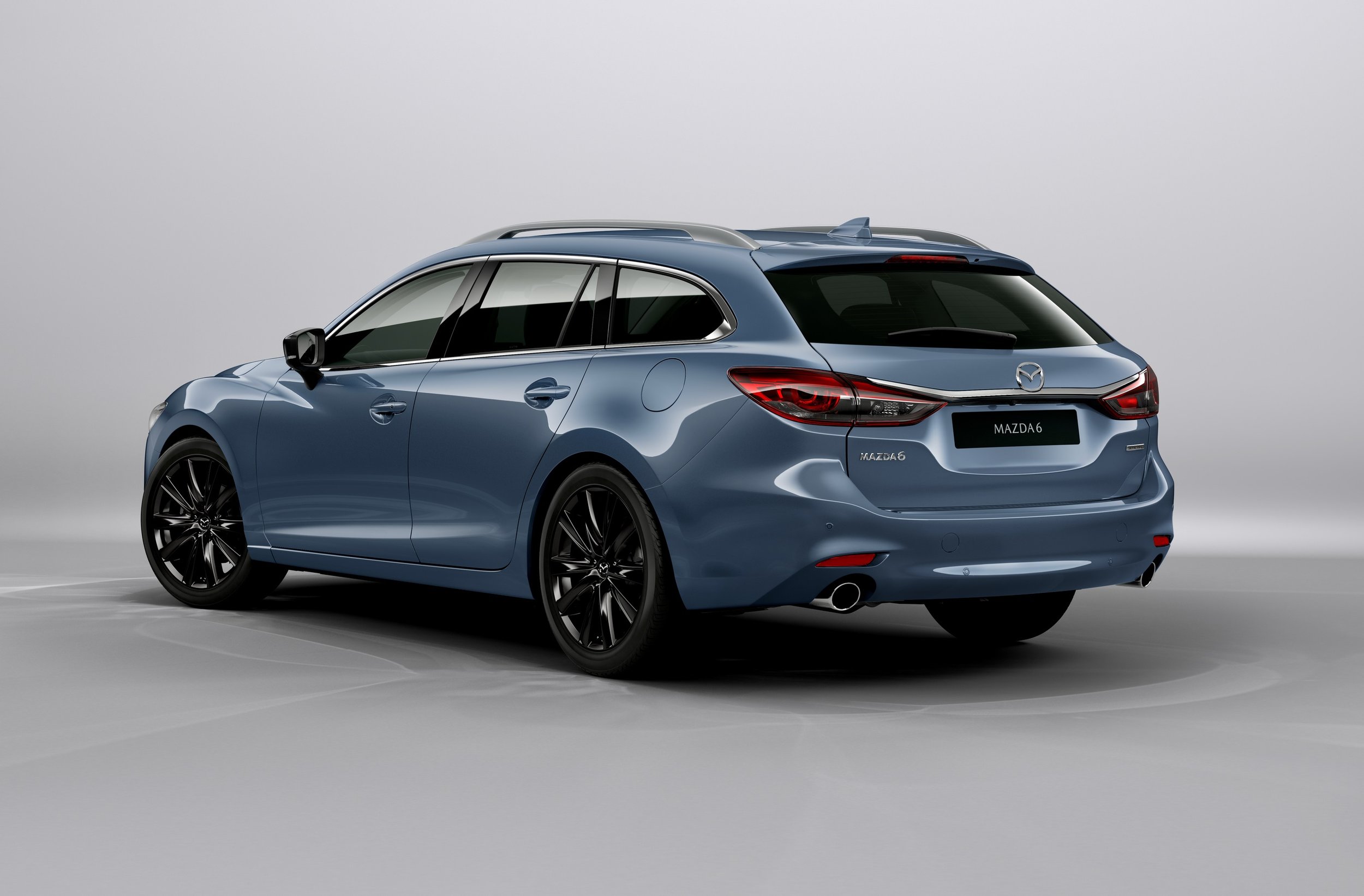





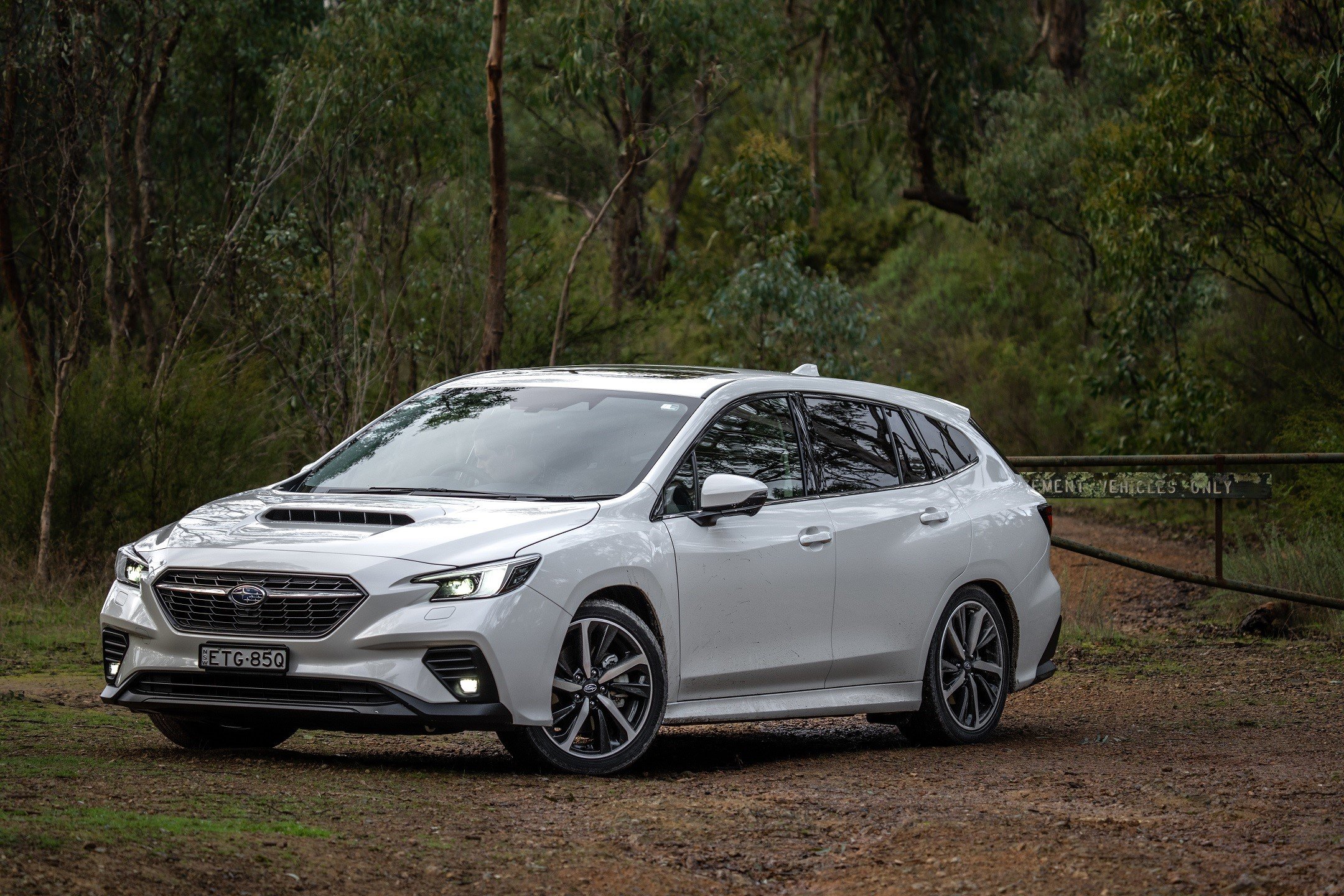





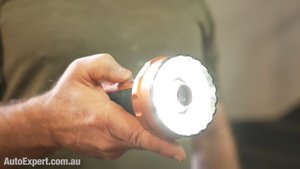

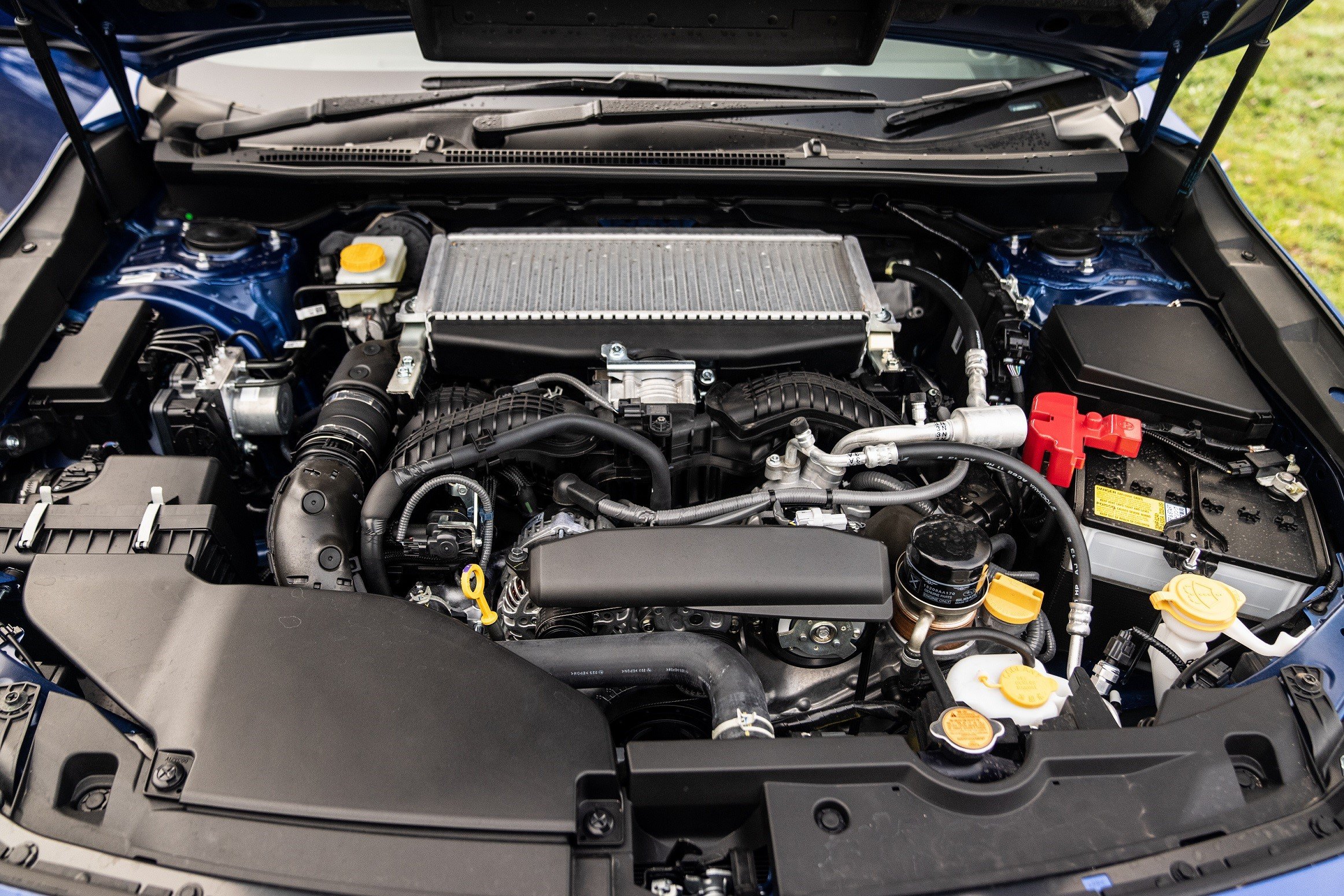
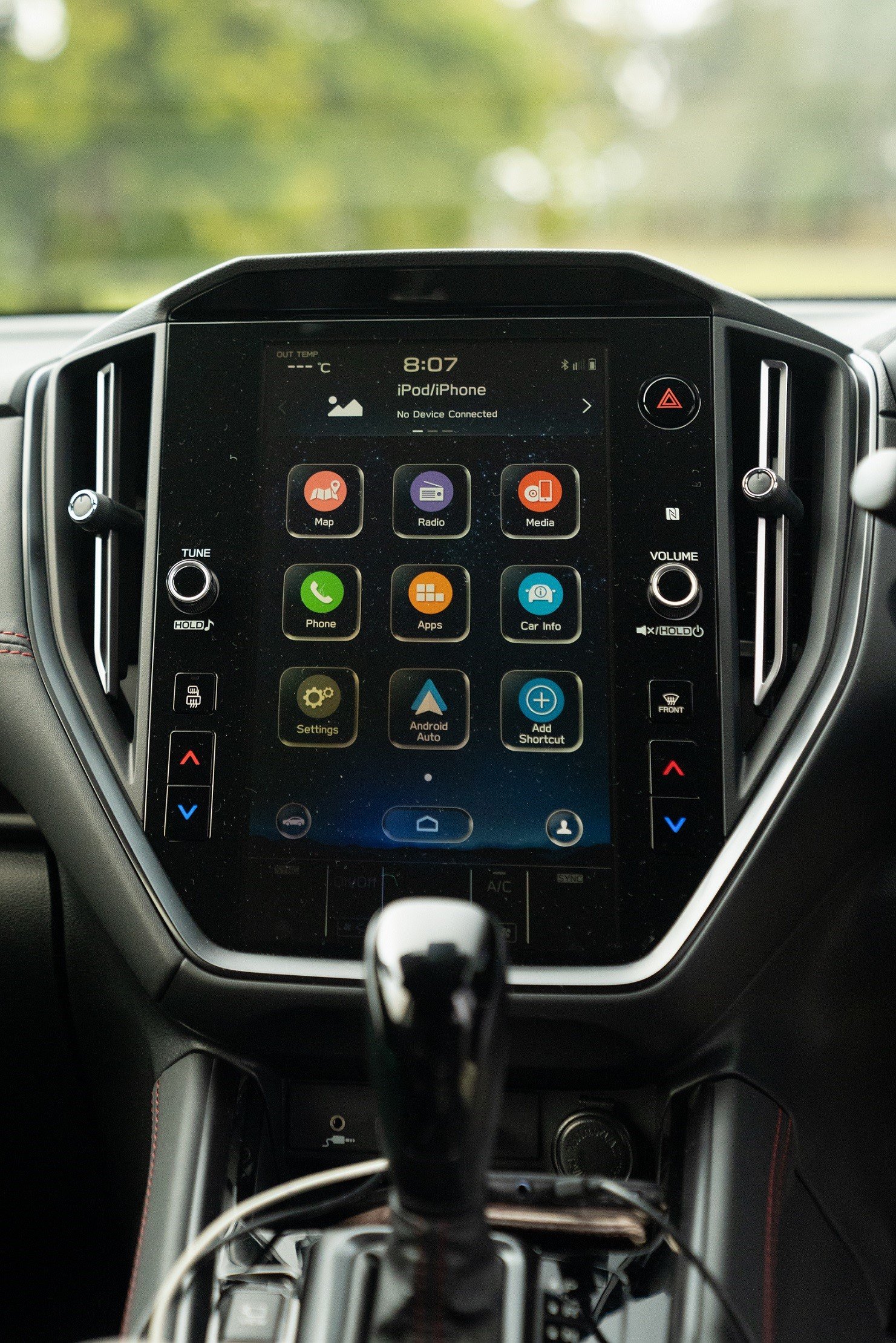
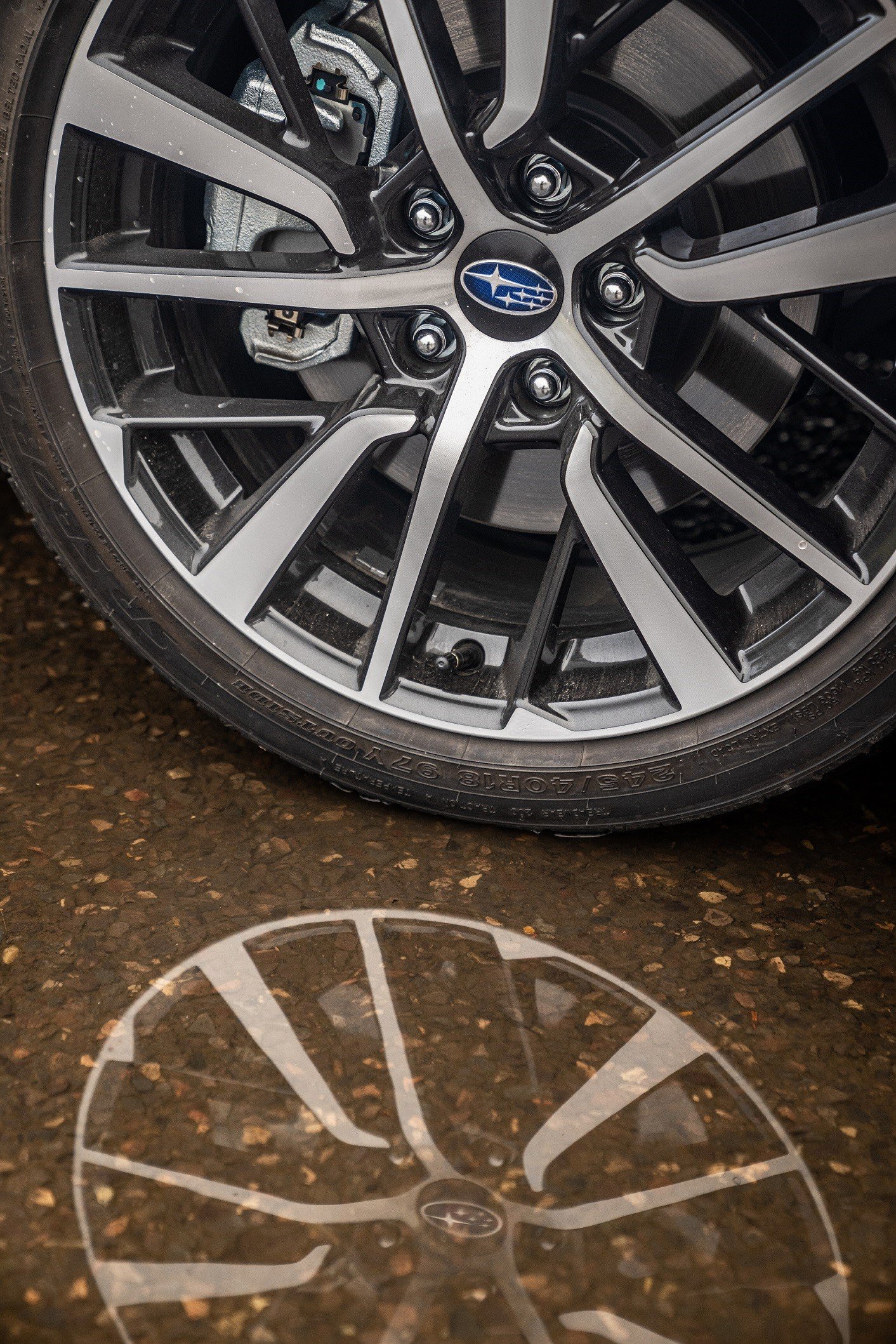




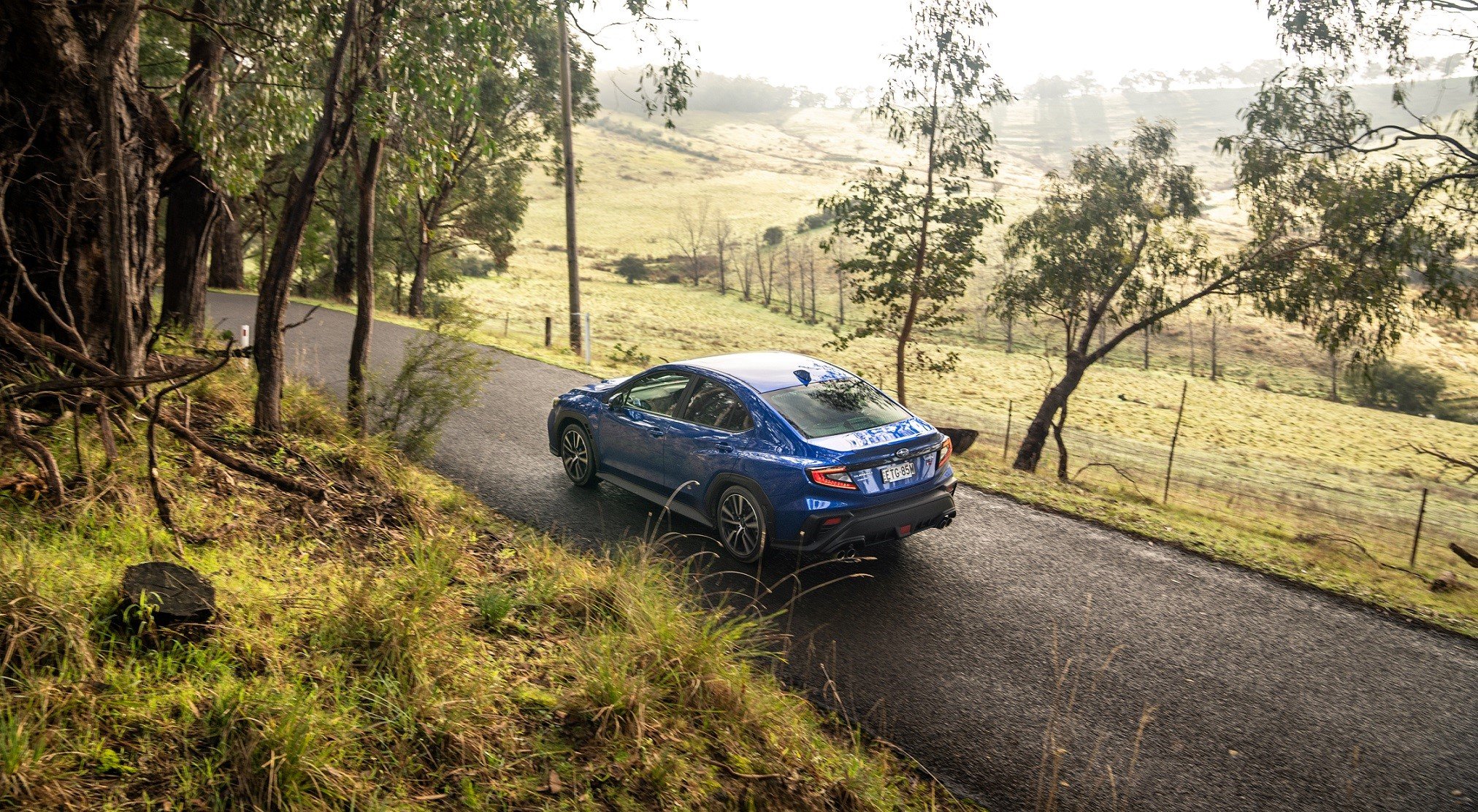
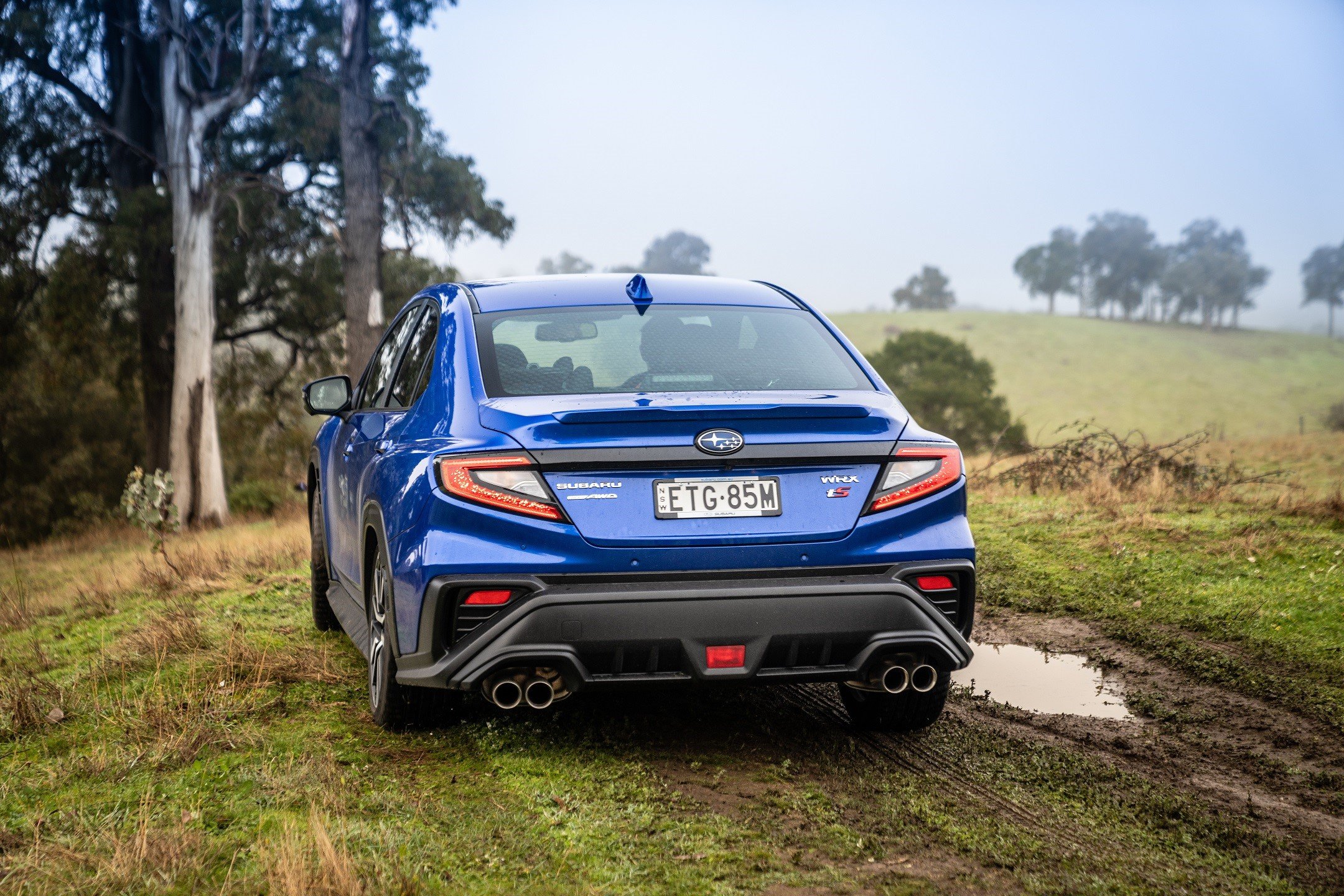


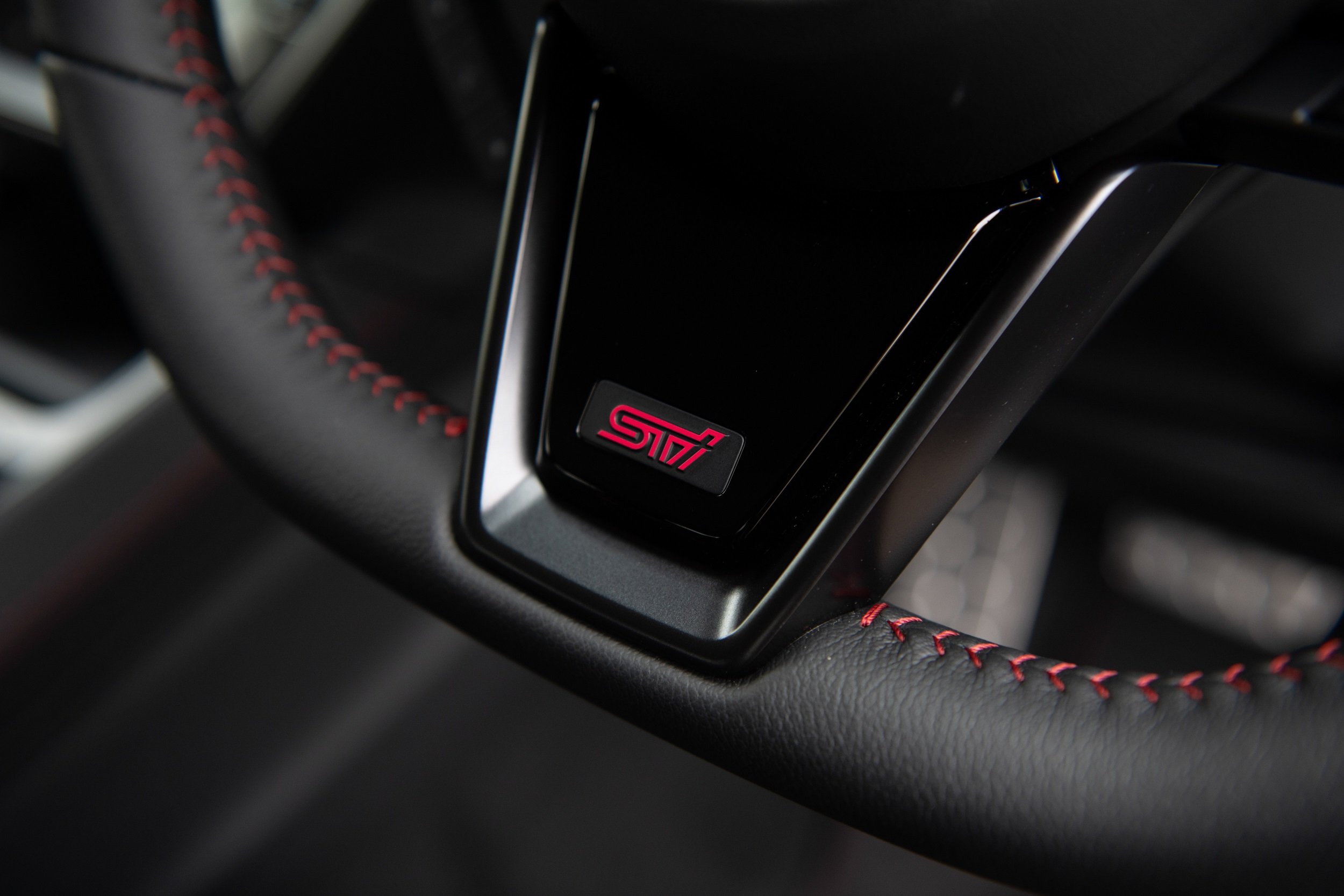
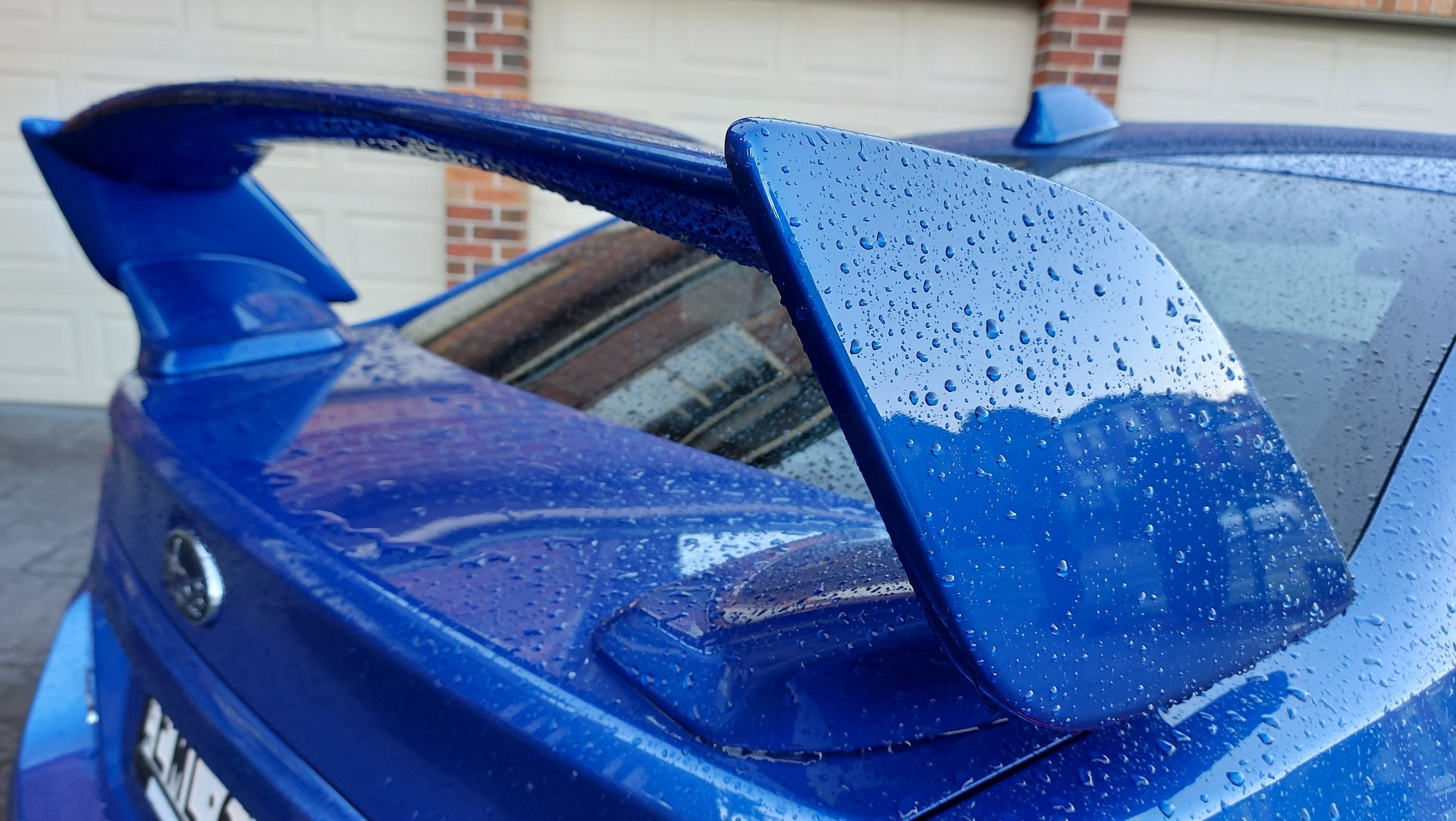

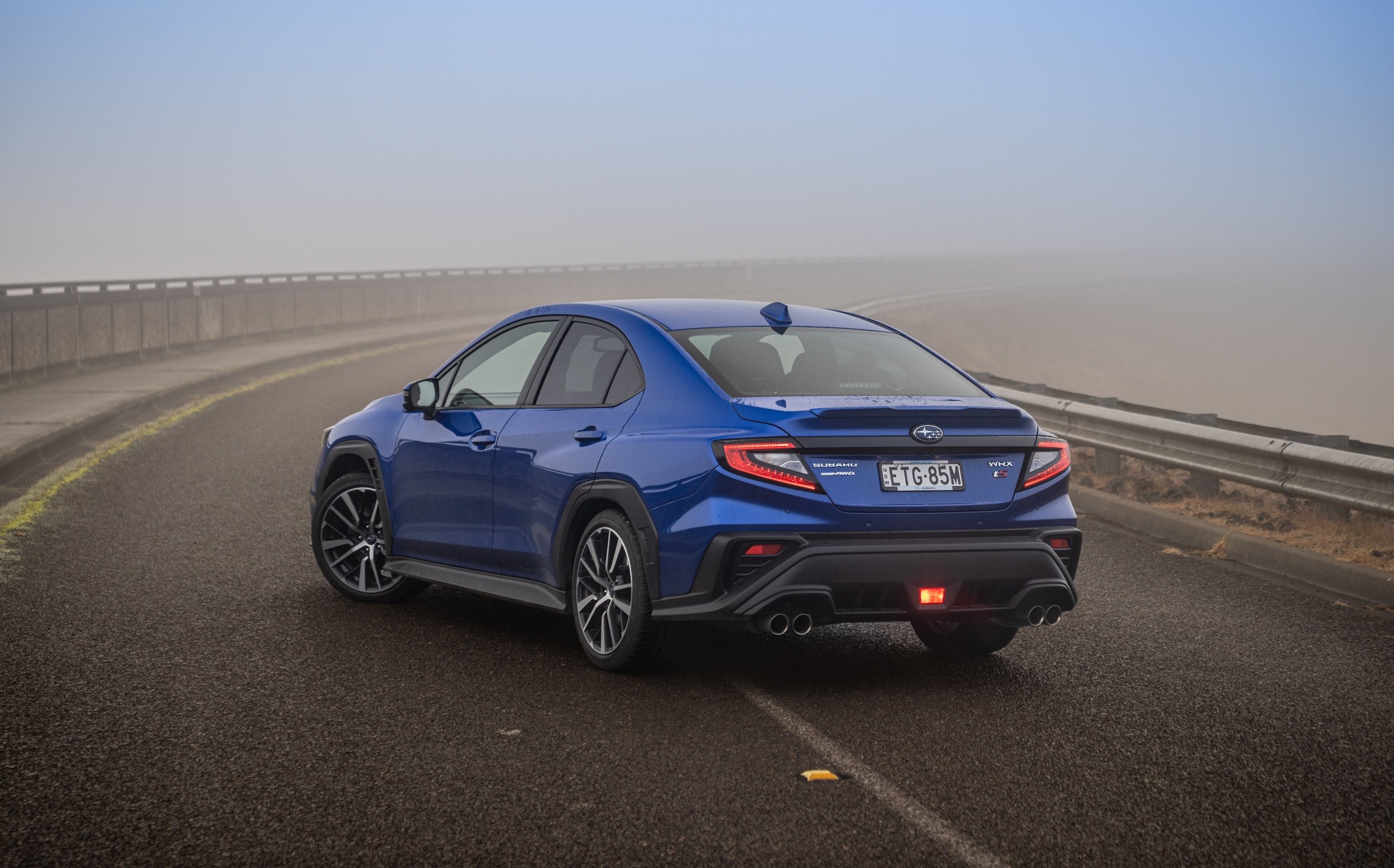









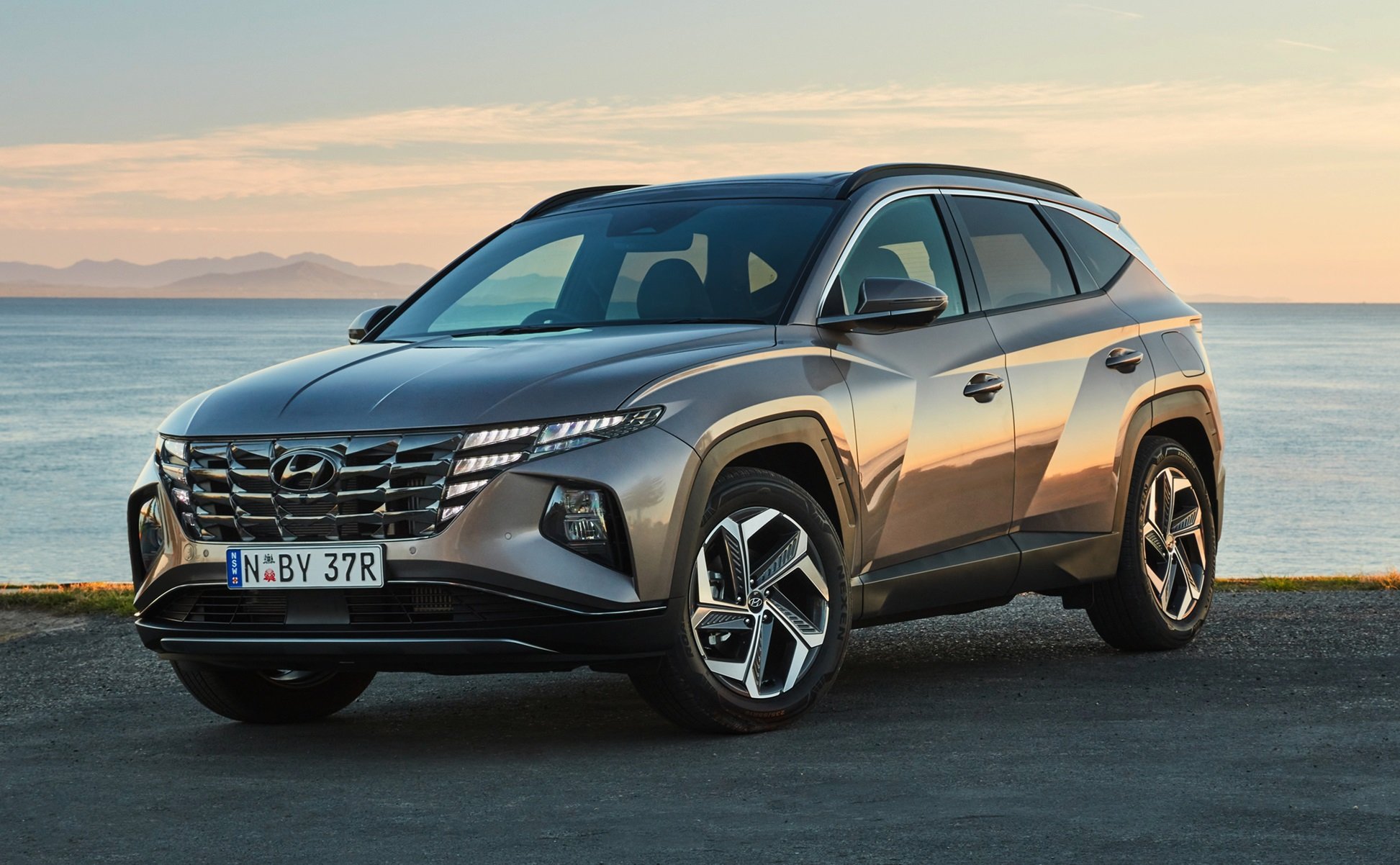

The Hyundai Palisade is a big, bold and comfortable holiday machine for growing families. Palisade offers excellent value, generous 8-seat SUV space, and practicality on par with LandCruiser, but at a much more affordable price.